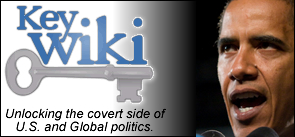George Mason Univ. Gets Their Fascism On – Who Knew It Was A Crime To Hang Anti-Terrorism Posters?
By: Terresa Monroe-Hamilton My friend and compatriot Oleg Atbashian found that out the hard way....
Read MoreBy: Terresa Monroe-Hamilton My friend and compatriot Oleg Atbashian found that out the hard way....
Read MoreBy: Bethany Stotts Accuracy in Media Criticisms of Clinton Cash follow a common template, one...
Read MoreBy: Bethany Stotts Accuracy in Media Biased journalists view the world locked into paradigms...
Read Moreby TMH | Feb 23, 2015 | Constitution, Politics, Survival | 0 |
By: Bethany Stotts Accuracy in Media With mainstream media figures such as Al Sharpton acting as...
Read More

My beloved husband,
GARRY HAMILTON,
passed away
on September 24th, 2022.
I will love you always.

